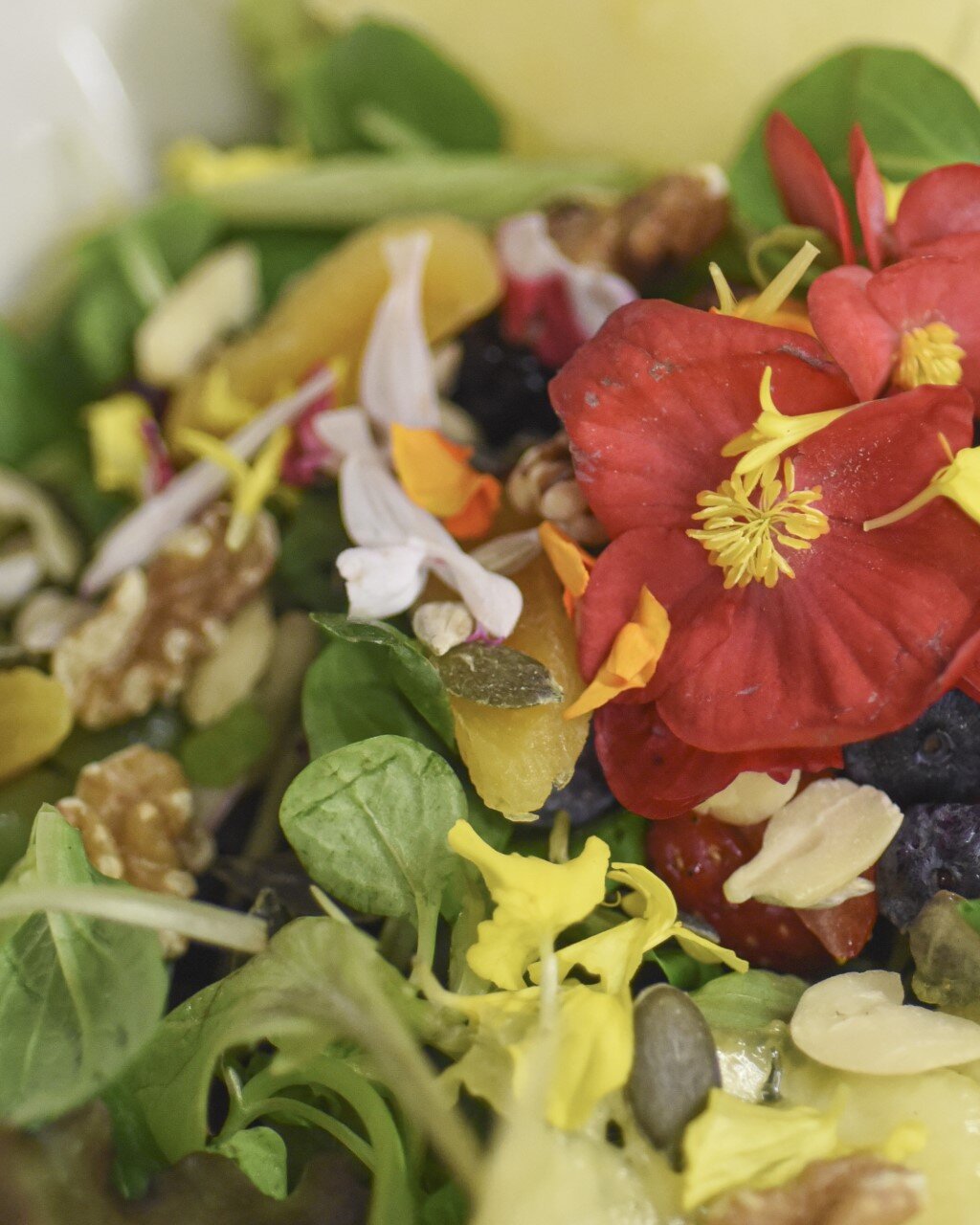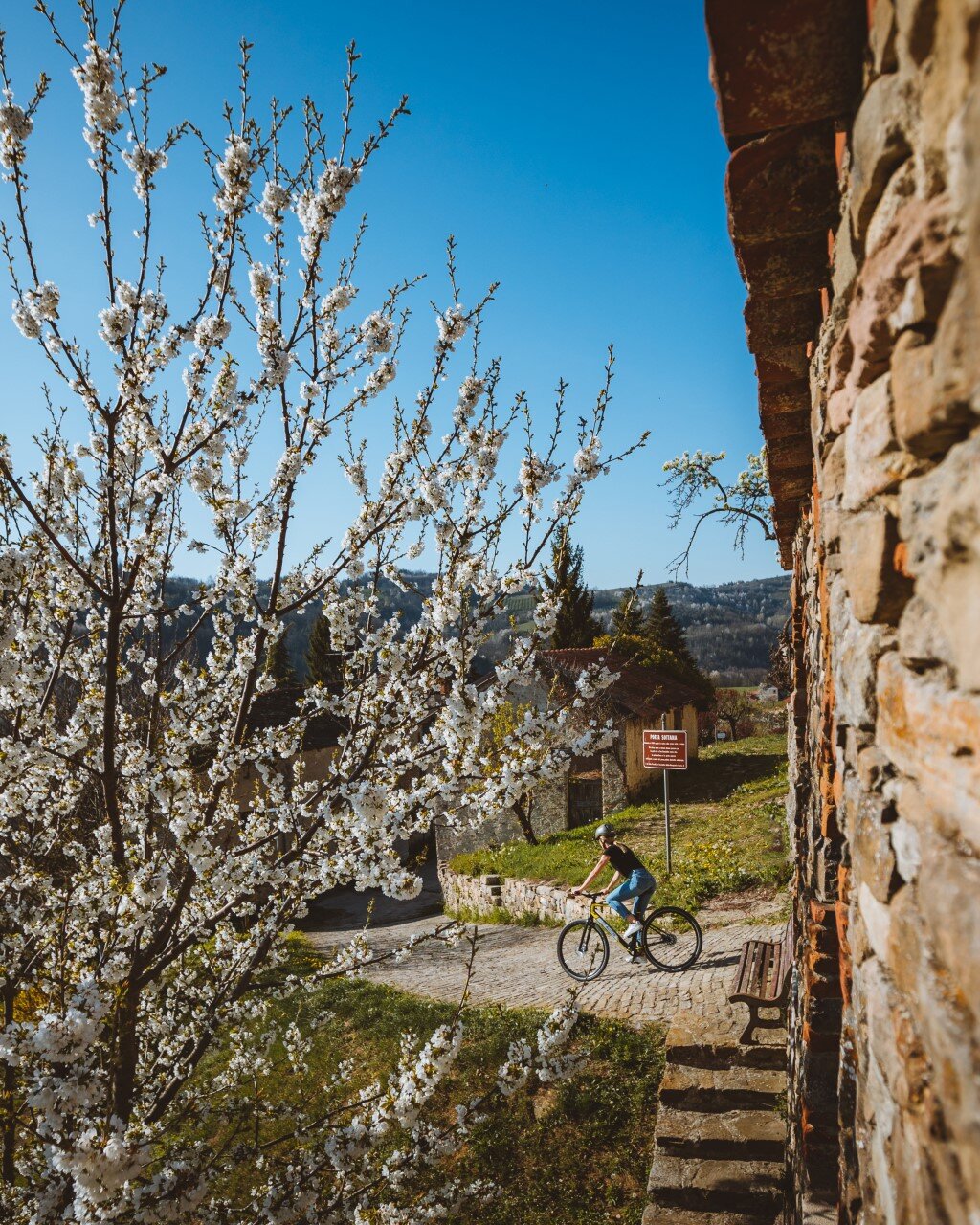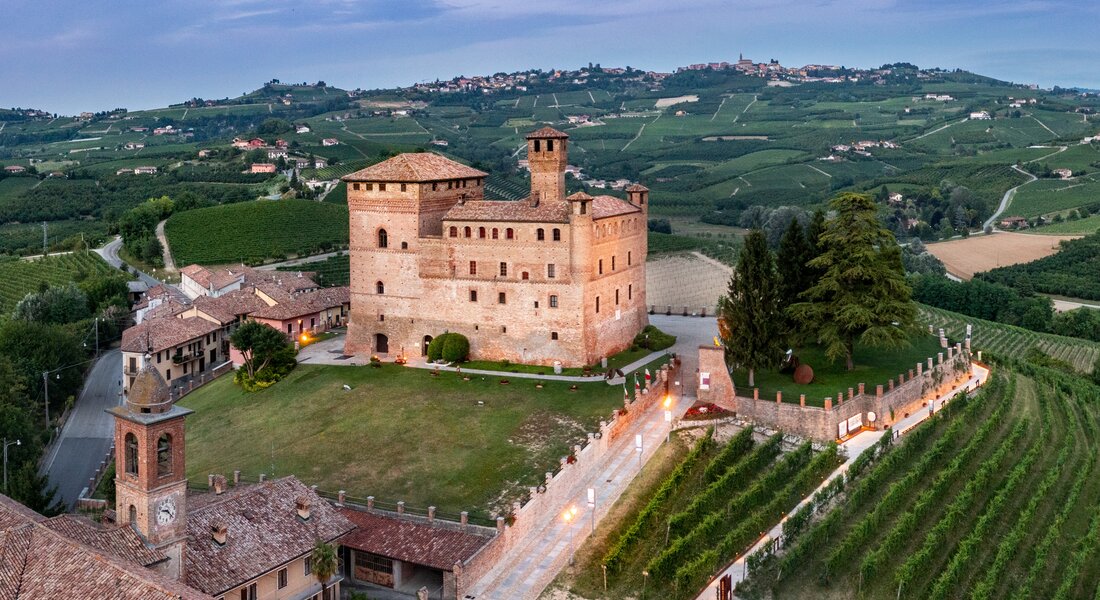Starting point of this long tour is Grinzane Cavour, with its Castle, a historical monument of national importance. It is a place that opens the heart and mind and will take you back in time, when Camillo Benso planned a thousand reforms, right from here, and dreamt of a united Italy. Not to be missed, alongside the Museo delle Langhe (Museum of the Langhe), is Piedmont's first Enoteca Regionale (Regional Wine Centre), since 1967, and the In Vigna Open Air Museum.
The route then goes up over the upper Serralunga d’Alba hill which will seem both unexpected and almost surreal in its timeless charm. A tall medieval fortress overlooks a hamlet with a few houses clustered around its ramparts. The village is intact: you enter on foot through the city gate and walk through it with wonder and without haste. The landscape you walk through fully justifies the UNESCO recognition as the small hamlets of Castelletto and Perno di Monforte d’Alba stand out on the other hillside through castles, Romanesque churches and tiny villages. Below, in the small valley, you will find the royal estate of Fontanafredda, buen retiro of Victor Emmanuel II far away from state affairs. Once you reach Roddino, you have to stop and fill your eyes with the view over the whole DOCG area which looks completely different from here.
Find out more
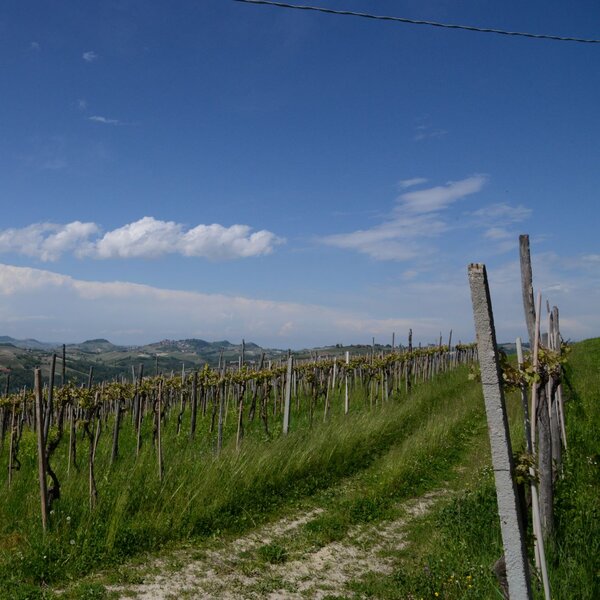
The Langa of Dolcetto
Find out more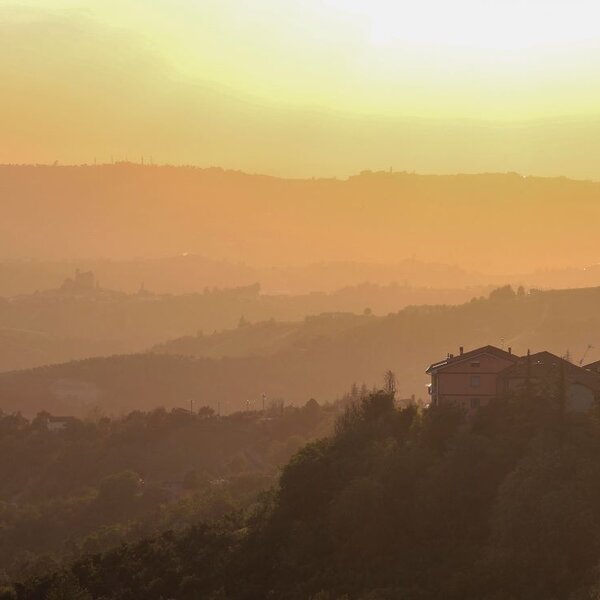
Alta Langa of the Belbo
Find out moreSince we have nearly covered half the circle of the crown, we just have to pass through Castiglione Falletto (another turreted village with a mighty private Fortress and an efficient Cantina Comunale -Municipal Wine Cellar), cross the famous Bussia hill and finally descend towards Barolo. The Castle of the patron and philanthropist Marquise Juliette Colbert, last heir of the Falletti dynasty, has medieval features and a Juvarra-style façade with a monumental staircase. Today the castle is home to the futuristic Wi-Mu Museo del Vino (Wine Museum), while beyond the entrance arch you will also find the engaging Museo dei Cavatappi (Corkscrew Museum) with unexpected trivia about this essential item. The Enoteca Regional (Regional Wine Centre) of Barolo is another secular temple where you can worship Bacchus. The rest of the village switches easily from the Middle Ages to the 19th century with a typical all-Savoy detachment from the fame which surrounds it today.
From the village you can easily descend to Cherasco (see itinerary The “secret” treasures of Cherasco), a villanova of great history and nobility, or to Verduno, with its romantic belvedere and the Cantina Comunale (Municipal Wine Cellar). Then, there are the spicy scents of rose, violet and pepper of Pelaverga, another rare native grape variety, but this time it is red and aromatic. A must-see is also the neo-Gothic village of Pollenzo below, with its Università di Scienze Gastromiche (University of Gastronomic Sciences) and Banca del Vino (Wine Bank). Finally, on your way back, you get to Roddi. Its Castle towers over the village nestled at its feet: it houses an area dedicated to truffles and a kitchen especially set up for gastronomic classes and events. From Roddi you can overlook Grinzane Cavour, the final destination of our itinerary.
Find out more
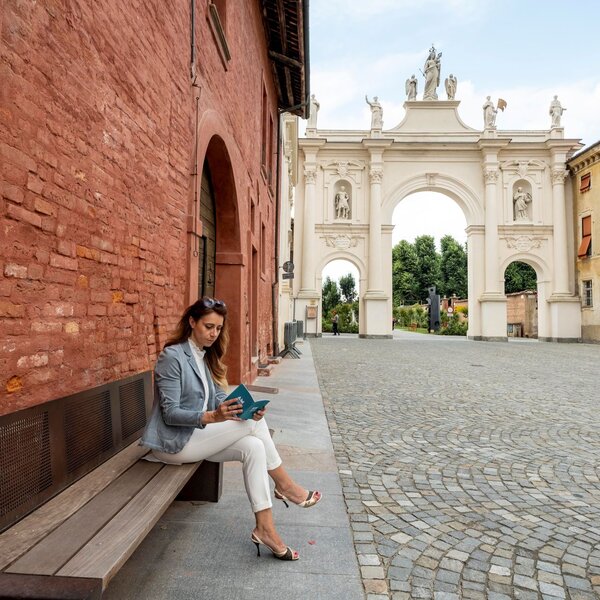
The “secret” treasures of Cherasco
Find out more
